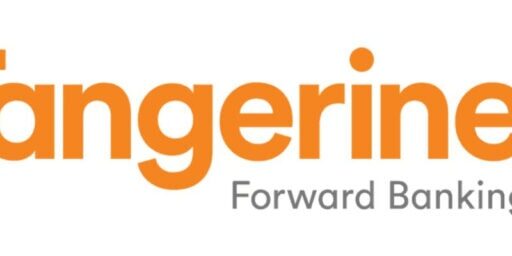Smith Manoeuvre Portfolio Update – June 2010
For those of you just joining us, below is my portfolio that is leveraged with money borrowed from my home equity line of credit (HELOC). As the money borrowed is used to invest, the interest charged is tax deductible. I write an update every so often to show new positions added along with any market gains/losses. For more details on the strategy and procedure, check out my modified smith manoeuvre strategy and my comparison of online stock brokers.
Since I started this portfolio in 2008, it has been a wild roller coaster ride. I had great market timing in 2008 and leveraged the portfolio a few months before everything fell apart (note the sarcasm). Even though the portfolio value fell over 25%, I stuck with the plan and the dividends never stopped rolling in. Now in 2010, the portfolio is hovering around break even, with the dividend stream still going strong.
Since March of 2009, the markets have been red hot. So hot in fact that I’ve been having trouble finding strong dividend companies with attractive valuations. In other words, I have been doing very little buying. I have, however, during this most recent correction initiated two new positions for the portfolio. They are Ensign Energy Services (ESI.TO) and Mullen Group (MTL.TO).
ESI is a oil well drilling contractor that has increased their dividend over the past 4 years, has a strong balance sheet with no long term debt and has a payout ratio of approximately 57%. Mullen Group is mostly known for the oil field services and trucking business in western Canada. Although their balance sheet isn’t as clean as ESI’s, they have a ton of cash, trade below book value and have a 3.6% dividend yield with a low 38% payout ratio.
My dividend watch list hasn’t changed since my last couple reports. I am looking to increase my position in T.BMO, T.TD, T.ENB, T.FCR and new positions in T.CNR and T.L when their valuations become attractive.
The Portfolio as of June 2010:
| Stock | Symbol | Shares | Avg Buy Price | Total | Div/Share | Yield |
| Royal Bank | RY.T | 75 | $47.62 | $3,571.25 | $2 | 4.20% |
| CIBC | CM.T | 45 | $67.14 | $3,021.25 | $3.48 | 5.18% |
| Power Financial | PWF.T | 105 | $35.14 | $3,689.65 | $1.40 | 3.98% |
| Scotia Bank | BNS.T | 105 | $41.91 | $4,400.52 | $1.96 | 4.68% |
| Manulife Financial | MFC.T | 125 | $33.12 | $4,139.48 | $0.52 | 1.57% |
| Fortis Properties | FTS.T | 150 | $25.63 | $3,843.98 | $1.04 | 4.06% |
| TransCanada Corp | TRP.T | 100 | $33.50 | $3,349.74 | $1.52 | 4.52% |
| AGF Management Limited | AGF.B.T | 50 | $22.71 | $1,135.49 | $1.00 | 4.40% |
| Bank of Montreal | BMO.T | 25 | $44.17 | $1,104.24 | $2.80 | 6.34% |
| Husky Energy | HSE.T | 135 | $32.53 | $4,391.27 | $1.20 | 3.69% |
| TD Bank | TD.T | 50 | $48.24 | $2,412.23 | $2.44 | 5.06% |
| Enbridge | ENB.T | 40 | $37.36 | $1494.39 | $1.48 | 3.96% |
| TransAlta | TA.T | 50 | $21.47 | $1073.49 | $1.16 | 5.40% |
| First Capital Realty | FCR.T | 100 | $15.75 | $1,574.99 | $1.28 | 8.13% |
| Canadian Utilities | CU.T | 50 | $36.40 | $1,819.99 | $1.41 | 3.87% |
| Ensign Energy Services | ESI.T | 100 | $13.81 | $1,380.99 | $0.35 | 2.55% |
| Mullen Group | MTL.T | 50 | $14.18 | $708.99 | $0.50 | 3.58% |
More Stats
- Total Cost Base of Equities (inc. fees): $43,111.94
- Market Value of Equities (June 15, 2010): $44,223.65
- Total Dividends / Year: $1,834.10
- Portfolio Dividend Yield: 4.25%
Sector Allocation (based on market value)
- Financials: 54.25%
- Utilities: 16.97%
- Energy: 25.53%
- Resources: 0.00%
- Real Estate: 3.24%
- Other: 0.00%
With regards to sector allocation, you may notice that this portfolio is fairly concentrated in financials. Note though that this is one of my accounts where I treat all of my accounts as one big portfolio. In other words, my international and other sector equity exposure are in other accounts.
Disclaimer: There have been a lot of readers who have mentioned that they are interested in a leveraged portfolio. Over the long term it may be lucrative. However, over the short term, equities are volatile and can put the portfolio deep in the red. My portfolio over 2008 is a prime example of what can happen. If you can’t stomach losing 20-30% in the portfolio in any given year, then your risk tolerance isn’t suited for leveraged investing. As well, the securities mentioned in this post are not recommendations to buy or sell.
I've Completed My Million Dollar Journey. Let Me Guide You Through Yours!
Sign up below to get a copy of our free eBook: Can I Retire Yet?










Hey Amit! I wouldn’t use myself as a model for proper asset allocation. :) However, I do model my portfolio for optimal tax efficiency, you can read more about it here: https://milliondollarjourney.com/portfolio-allocation-rrsps-tfsas-and-taxable-accounts.htm
Hello FT, it will be really interesting to view your entire giant portfolio that includes the equities in your other accounts (TFSA/RRSP) so that we can get a good idea about how to base our own giant portfolio.
For example, I have 5 accounts – 2 RRSPs (one for me and my wife), and 2 spousal RRSP accounts for both of us, 1 non-registered account, and 2 TFSA accounts; and I also treat all my assets as 1 giant portfolio. Looking at just 1 account may give someone a false idea about my holdings, but looking all accounts together the asset allocation makes sense.
I have divided all the accounts in this way:- 15% Canadian Stocks and Bonds, 15% Developed Stocks and Bonds, 15% Emerging, and 55% US.
I have 80/20 split between stocks and bonds in all 4 sections (Canada, US, Developed, and Emerging) and have further divided my equities into Large Cap, Large Cap Value, Mid Cap, Mid Cap value, Small Cap, Small Cap value, and REITs keeping the following breakdown for the 80% – 34% Large Cap + Large Cap Value, 34% Mid Cap, Mid Cap Value, Small Cap, Small Cap Value, 12% REIT.
I have bought ETFs for most of my developed and emerging holdings – like EWG, DLS, EFV, BRF, GULF, DEM, DWX, VWO.
I have bought individual dividend paying stocks for my US side of the portfolio spread amongst the various accounts like:- BMS, ED, VFC, NLY, ABT, STON, etc.
For Canadian side (entire non-registered section of my one big portfolio) I am split between deciding to keep ETFs like CDZ, XCV, XDV, XIU in my portfolio or to keep individual Canadian dividend paying stocks. For now, it’s the ETFs but could switch to using individual stocks in the future.
Looking forward to a post about your entire one big portfolio.
Thanks.
Hi FrugalTrader, we have a few similar holdings. I have TransAlta, BMO, Manulife and Powerfinancial. Man, financial sector has been getting hit big time with the Euro debt concern and financial reform. I am a firm believer of Manulife as the business has been going strong. The cut in dividend has reflected in the market price, although I am very surprised that the share price keeps going down (to $15.50-ish now). My avg cost of Manulife is $20-ish. *ouch* I am looking forward to adding “AGF”.. and Enbridge or Fortis (and some telecommunications). My primary focus during this turbulent time is on traditional, non-sexy, industries like telecommunication and utilities. These two sectors will continue to survive in case the so-called double-dip recession occurs. I hope it does.. so I can buy more and average down. I am also following ‘Crescent Point Energy” and Claymore’s CDZ and iShare XTR/XRE (income funds ETF). These ones will provide a great diversification in my portfolio.
PS: I can feel your pain for Manulife… it shouldn’t be this low price!!!
**By the way, one great way to see which company has been INCREASING dividends for the last 5 years is check out Claymore’s CDZ ETF. Just go to the website and see the top holdings. Most financials are on the list except Manulife (for obvious reason). I am surprised to find CML Healthcare on there.. I got some holdings since Canada doesn’t really have a big healthcare industry. The largest retail drug store, Shoppers Drug Mart, is taking a dive. You just know the investors are waiting to see how their revenues will be impacted by the Ontario gov’t’s new rule on generic drugs. Anyway.. keep investing! Opportunities are FINALLY knocking on the door again…
great article… but I need to point out that using my RBC homeline LOC to purchase a rental property has hammered my credit score. Although my credit accounts are all rated R1, the RBC reports my full LOC balance to the credit bureau, so it appears to the bureau and to lenders that I have a huge maxed out consumer LOC, which has dropped my FICO from 750+ to the 630 range. This makes obtaining a vehicle lease or other financing outside my RBC Homeline virtually impossible. For example, although I have lots of equity in my home, I am unable to obtain 0% financing on a new vehicle as the large RBC LOC balance used for investments makes lenders very nervous.
I just want to mention this. I would recommend that investors research lenders who do not report the LOC portion to the bureau. I heard Merix does not report the LOC portion of the mortgage to the bureau so I may switch from RBC when my Homeline Plan is up for renewal.
I am sure you are aware of it, but isn’t a 50% allocation to financials a little excessive? I now that Canada doesn’t have consumer staples companies such as CLX, JNJ, PG, MCD etc, and probably retailers suc has Metro don’t yield much to cover your interest expense; But it seems that your risk is double here – first leverage and second concentration in financials.
Best Regards and Good Luck!
Dividend Growth Investor
Hi Andrew,
CRA specifically states in IT-533 that there is no requirement for investment income to be sufficient to cover the interest. Here is a direct quote:
“Courts should not be concerned with the sufficiency of the income expected or received.”
In our case, we have been doing versions of the SM for 15 years and have not yet received even a penny of dividends. (Our focus is on long term growth and trying to avoid paying any tax on investment income.)
Having received zero dividends so far has no effect on interest deductibility.
Ed
From my understanding, as well, preferreds add a wrinkle to interest deductibility. You can only deduct interest at rates up to the coupon rate on the preferred. This should be confirmed, but I did hear this somewhere, and it does make some sense.
@wx_junkie, congrats on the timing! I wish I started the SM in April/May 2009!
@Qz, I have thought about preferreds, but they provide very little growth opportunities in both capital and dividends. As well, the preferred shares availalbe in Canada will most likely be the underlying issues of the common stock that I already hold (lacks diversfication).
Thanks for providing this insight. Do you have any thoughts on holding some of the portfolio as preferred shares? They seem to offer decent dividend yields and much lower volatility.
On second thought, I think I was completely missing something, since in the above scenario you are not making any mortgage pre-payments — which is the whole point of the Smith Maneuver.